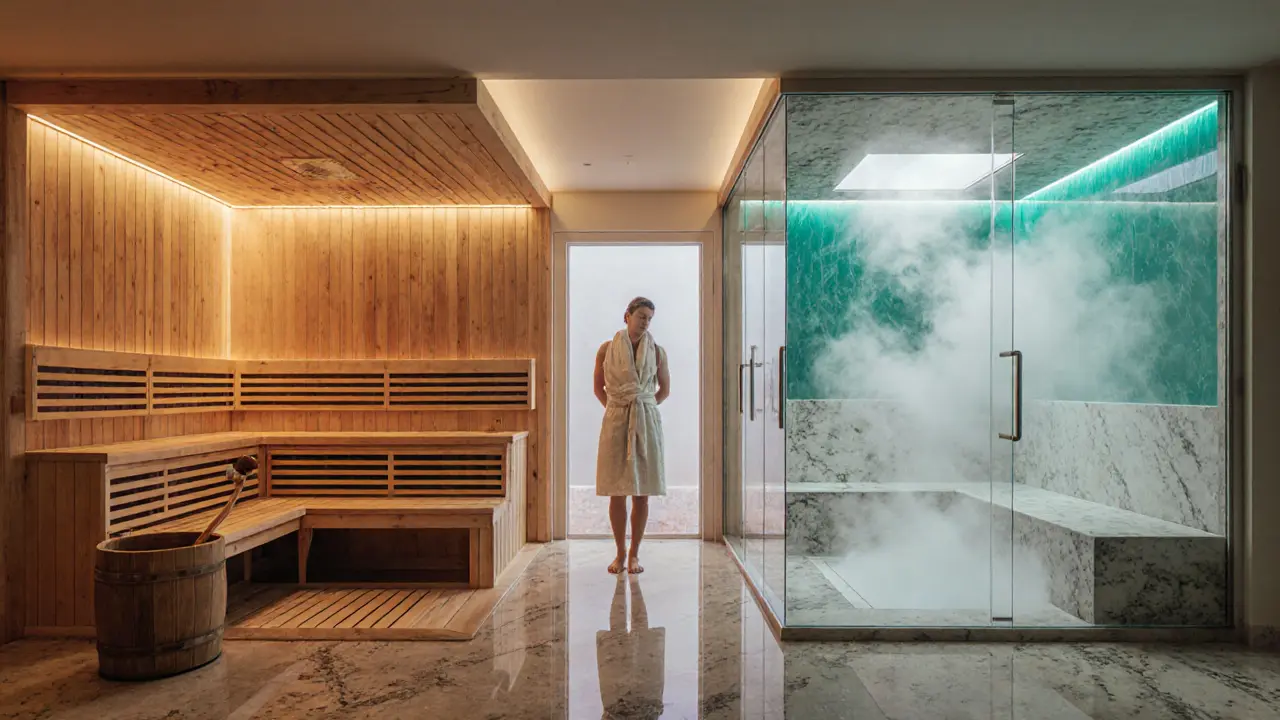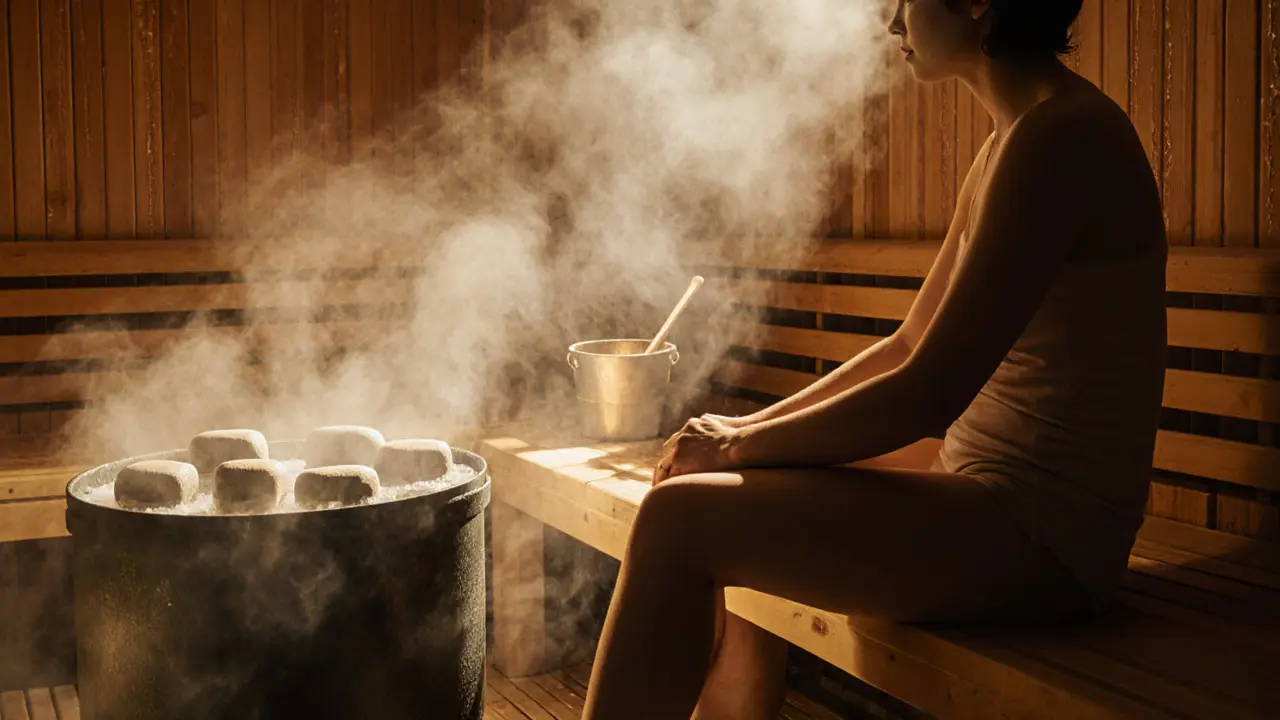Are There Negative Effects of Sauna? Your Comprehensive Guide
The negative effects of sauna rarely get the same attention as its feel-good benefits. Sweating it out in a steamy, wood-paneled room might sound like the perfect way to unwind, but is all that heat really harmless? Saunas have loyal fans all over the world, but not every enthusiast pauses to consider what happens when things get a little too hot—literally.
From stories of endless relaxation to tales of unexpected dizziness, the sauna world is full of surprises. So, should you trust the hype, or is there a hidden side to all that sweat? Let’s peel back the steam and look at where saunas come from, how they work, what they offer, and where they might trip you up. It’s not about scaring you off—just making sure your next sauna visit feels like a treat, not a regret.
Understanding the Basics of Sauna
Origins and History
Saunas go way, way back. Think ice-covered Finland, thousands of years ago, where the first saunas were nothing like the polished ones you see in fancy hotels. Early saunas were simple pits covered with animal skins, heated by stones from a fire. People eventually built wooden structures, turning the sauna into a centerpiece of Finnish culture. Fast forward, and you’ll find versions of steam or heat bathing just about everywhere: Turkish hammams, Russian banyas, and even Japanese onsens.
The sauna became much more than hot air—it wove itself into social life, spiritual rituals, and family gatherings. In Finland, it’s still the place for big decisions, birthday celebrations, or plain old stress relief. Today, you can find saunas in gyms, spas, hotels, and, surprisingly, some apartments in Dubai’s glittering towers. The point: heat therapy belongs to everyone, not just a particular country or group.
Core Principles or Components
Every sauna—no matter the style—relies on dry or moist heat. You heat a room or space (generally made of wood) to anywhere from 70°C to 100°C (that’s 158°F to 212°F). The heat can come from old-school wood-burning stoves, electric heaters, or even infrared panels. Traditional Finnish saunas are dry, but if you toss water onto the hot rocks, you get a burst of steaming heat, known as ‘löyly’—which feels like a hot slap and is absolutely addictive for fans.
Modern saunas can be a social scene or a solo retreat. Some add essential oils, soft lighting, or even color therapy. But the core idea remains: intense heat makes you sweat, your heart beats a little faster, and your muscles relax. If you’re curious about how that’s different from other heat therapies, keep reading—I’ve got you covered below.
How It Differs from Related Practices
It’s easy to confuse saunas with steam rooms, hammams,or infrared cabins. So what makes a sauna unique? Here’s a handy comparison table:
| Practice | Key Feature | Primary Benefit |
|---|---|---|
| Sauna | Dry heat (some steam with water on rocks) | Deep sweating, muscle relaxation |
| Steam Room | Wet, humid steam (near 100%) | Hydrates skin, easier breathing |
| Infrared Sauna | Direct heat to body via light panels | Milder temp, can be gentler for sensitive users |
| Hammam | Layered heat with washing/scrubbing | Cleansing, skin exfoliation |
Whereas steam rooms focus on moisture, sauna heat is drier and sometimes feels less oppressive if you’re not used to humidity. Infrared saunas turn the temperature down but claim to reach deeper into muscles, while hammams add a grooming component (think scrubbing, washing, exfoliating). The key for saunas is their simple, intense heat and the culture of ‘ritual sweating’—often followed by a cold plunge.
Who Can Benefit from Sauna?
Saunas aren’t just for seasoned spa fans. They’re perfect for athletes wanting muscle relaxation after a heavy workout, office workers chasing stress relief, or anyone needing a break from the bustle. Some older individuals find mild heat eases joint pain (as long as their health allows). Even couples and groups use the sauna for a social, screen-free catch up. However, saunas are not for everyone—if you have heart problems, low blood pressure, or are pregnant, it’s smart to check with a doctor first.
So whether you’re dreaming of glowing skin, cleared sinuses, or a good night’s sleep, the sauna could have a perk for you—just remember, start gently and listen to your body’s warning signals.
Benefits of Sauna for Body and Mind
Stress Reduction
The first thing you’ll notice in a sauna—besides the heat—is how calm you feel. That’s not a fluke. Heat exposure helps the body release endorphins (think happy hormones) and lowers stress-related cortisol levels, according to wellness authorities like the National Institutes of Health. Many users say that after a session, they feel as if the mental clutter has melted away—it’s like hitting a mental reset button. Some even compare it to meditation for those who can’t sit still.
Improved Circulation and Heart Function
Sitting in a sauna makes your heart work a little harder—comparable to a brisk walk in terms of pulse increase. Blood vessels expand, which helps deliver more oxygen and nutrients to your muscles and skin. Some research suggests regular sauna use could support heart health, especially if you’re otherwise active and healthy. That said, this benefit comes with a caveat: for people with heart disease or severe blood pressure issues, that same stress can backfire. Always check with your healthcare provider if you have concerns.
Relief from Muscle and Joint Discomfort
There’s a reason athletes are big sauna fans. Heat relaxes tight muscles and reduces minor aches, especially after intense exercise. If you’ve overdone leg day or tweaked your back at work, a sauna can ease stiffness in a way that hot baths sometimes can’t match. The deep, penetrating warmth boosts flexibility (temporarily) and can give a lazy, post-yoga vibe without stretching a muscle.
Skin and Mood Benefits
All that sweating in a sauna helps unclog pores, leaving your skin looking fresher (especially after a rinse-off). Some people with acne-prone skin notice improvements, but this can vary. Mood gets a solid boost too—if you’re feeling low or anxious, the sauna can be a safe, natural pick-me-up. It’s like getting a sunny day for your mind—minus the UV rays.
| Benefit | Description | Impact |
|---|---|---|
| Stress Relief | Heat calms nervous system, triggers endorphins | Ease daily stress, support mental wellness |
| Circulation | Blood vessels expand, heart rate increases | May benefit cardiovascular health |
| Muscle Relaxation | Relieves soreness, improves flexibility | Helpful for post-workout recovery |
| Skin Cleansing | Sweating opens pores | Can leave skin clearer, glowing |
| Mood Boost | Endorphins released | Support for mood and relaxation |
Tried sauna before? Share your experience in the comments—did you notice any surprising benefits?
What to Expect When Engaging with Sauna
Setting or Context
Most saunas today are found in spas, gyms, upscale apartment complexes, or some lavish private homes. The room is usually wooden with built-in benches and either an electric or wood-fired heater. Some have views of relaxing nature (all the more reason to chill out). Don’t expect chatter—many treat the sauna like a quiet zone, though in some cultures, conversation is normal and even encouraged. Lighting is subdued, and you’ll probably have to leave your phone outside. Dress code? It ranges from swimsuits to towels, or nothing at all if privacy allows.
Key Processes or Steps
- Shower before entering (for hygiene and to prepare your body).
- Sit or lie on a bench—higher benches are hotter.
- Start with a short session (5-10 minutes if you’re new).
- Add water to the rocks if you want more steam.
- Exit when you feel comfortably hot, not dizzy or weak.
- Cool down outside the sauna—many plunge into cold showers or pools.
- Hydrate! Saunas make you sweat hard.
- Repeat if you like, but keep total time reasonable (15-30 minutes tops for most).
Customization Options
No two sauna experiences are the same. Crave gentle heat? Stick to a lower bench or try infrared saunas. Love intense, steamy blasts? Go for the top seat and throw water on the stones. Some saunas let you add essential oils for a spa vibe, or dim the lights to wind down after a long day. If you’re worried about hygiene in public saunas, bringing your own towel or mat adds a layer of comfort.
Communication and Preparation
If you’re heading to a public sauna, review posted rules—and don’t be shy about asking for tips if you’re new. At home, prep your sauna space by cleaning benches and making sure the heater is working properly. Anyone with health concerns should check in with a doctor first—better safe than sorry. Lastly, always let someone know if you’re using a sauna solo, just in case you feel faint or unwell.
How to Practice or Apply Sauna Use
Setting Up for Success
Start with a pre-sauna shower—clean skin sweats better, and you’ll help keep the room hygienic for everyone. Bring two towels: one for sitting (keeps things sanitary), one for drying off. Remove jewelry (heat burns), hydrate before you get in, and give yourself a snack break if you’re feeling weak. Consider timing your session after exercise for added muscle benefits.
Choosing the Right Resources
Pick a well-maintained public sauna with clear cleanliness standards or, if you’re lucky, invest in a quality home sauna. Ask if the heaters are regularly serviced and if water quality is monitored. For social saunas, choose facilities that manage numbers so you’re not squeezed in like sardines. Not sure where to start? Consider asking trainers, spa therapists, or your gym’s wellness expert for their go-to places in Dubai or your local area.
Step-by-Step Guide
- Take a cleansing shower and dry off lightly.
- Enter sauna quietly, each step giving your body time to adapt to the heat.
- Choose a seat level—top for max heat, lower if sensitive.
- Relax, breathe deeply, and listen to how you feel.
- Optional: Add water to stones for steam, or essential oils for scent.
- Exit when you’re heated, not overcooked—dizziness or nausea means it’s time out.
- Cool down (outside air, cold shower, or pool).
- Repeat after a break or finish with relaxing, light rehydration.
Tips for Beginners
- Don’t stay too long—start slow and short.
- If you feel dizzy, leave the sauna immediately.
- Bring water and sip before, during (if allowed), and after.
- Use the buddy system if you have health concerns.
- Respect local norms: in Dubai, many spas separate men and women or require swimwear.
Ready to try? Let me know how your first session goes, and follow my blog for more wellness tips!

Safety and Ethical Considerations
Choosing Qualified Resources
If using public saunas, check that they have proper cleaning schedules and staff trained in first aid. High-end spas usually display certifications. For in-home setups, buy only from reputable suppliers and make sure installation follows UAE safety regulations. Never use a damaged heater or makeshift electrical connections.
Safety Practices
| Practice | Purpose | Example |
|---|---|---|
| Shower Before Entry | Hygiene and better sweating | Soap and rinse at the gym before sauna |
| Time Your Session | Prevents overheating | Use a timer, keep to 10-20 mins/session |
| Hydration | Replace lost fluids | Drink water before and after |
| Supervision | Emergency safety | Don’t sauna alone if you have health issues |
| No Alcohol Before | Protects heart and coordination | Skip cocktails before sauna |
Setting Boundaries
If sharing a sauna, don’t be shy about saying what’s comfortable for you—especially around nudity, spot seating, or temperature. Don’t force yourself to endure too much heat or peer pressure. Respect others’ privacy and space. If you’re not okay with certain practices (like essential oils), speak up politely.
Contraindications or Risks
- Avoid saunas if you’re pregnant, have unstable heart disease, uncontrolled high blood pressure, or are on certain meds.
- If you’ve recently had surgery or are feeling sick, sit this one out.
- Kids under 12 should use only with strict supervision and for shorter periods.
- Some skin or respiratory conditions worsen with exposure—check first with a doctor.
The World Health Organization (WHO) and national health agencies advise people with risky health profiles to consult a professional before adopting sauna routines. Everyone’s tolerance and safety needs are different!
Enhancing Your Experience with Sauna
Adding Complementary Practices
Pair your sauna session with deep breathing, easy stretching, or even meditation. Some spa-goers weave sauna time into full wellness rituals—think body scrubs, massages, or cold-plunge pools for contrast therapy. Aromatherapy can elevate a basic session into a mini-retreat. Just skip anything that overwhelms your senses (like strong perfumes or disruptive gadgets).
Collaborative or Solo Engagement
Solo sauna sessions offer quiet reflection, while group visits can turn into bonding experiences. Many cultures see conversation in the sauna as essential—others, totally taboo. Decide what works best for you. If you bring a friend, look out for each other, especially with time and hydration.
Using Tools or Props
Some saunas use special hats or towels to protect hair or skin from the hottest air. Wooden ladles, buckets, and thermometers personalize your session (temperature geeks, rejoice). Don’t forget water bottles—ditch glass for plastic to avoid burns. For luxury, spa-goers add snowballs or eucalyptus branches, but simple is perfectly fine.
Regular Engagement for Benefits
Just like a fitness routine, consistency wins. Whether you sauna weekly or monthly, your body gets better at handling the heat and you’ll notice long-term perks (less stress, smoother skin, maybe even better sleep). Skipping a few sessions? No biggie. But making sauna part of your routine can mean deeper relaxation and more pronounced effects over time.
Explore sauna in your wellness journey! Have tips to add? Drop them in the comments, or follow for our next round of practical, science-backed spa wisdom.
Finding Resources or Experts for Sauna
Researching Qualified Experts
Look up reviews of local spas or check with reputable wellness organizations for recommended spots. In Dubai, hotels and fitness clubs often have well-trained staff overseeing sauna areas. If you’re traveling, ask your hotel concierge about trusted public saunas or exclusive experiences—they’ll know the best spots.
Online Guides and Communities
Many wellness websites and forums have detailed guides to sauna etiquette, benefits, and precautions. Check platforms with contributions from certified trainers or health experts—skip random advice unless it’s from an informed source. YouTube channels and wellness podcasts also break down sauna science into plain language.
Legal or Cultural Considerations
In Dubai and some Middle Eastern countries, observe local customs: use swimwear (unless otherwise specified), follow gender-segregated rules, and respect privacy. Some facilities have strict hygiene policies; others might bring in traditional elements, like salt therapy. Respect the culture, and ask staff if you’re unsure about anything.
Resources for Continued Learning
- Books on heat therapy, aromatherapy, or wellness routines
- Online classes on spa practices
- Wellness blogs dedicated to self-care and relaxation (like this one!)
Keen to know more? Follow my blog for new tips every week!
FAQ: Common Questions About Sauna
Curious about basics, risks, or differences between sauna types? Here are the top questions I hear from readers and clients alike, answered simply.
What should I expect from a sauna session?
Expect to sweat—a lot! The heat is intense at first, but your body quickly adjusts. Most people sit in a towel or swimsuit, keep quiet, and take short breaks for cool-downs. Afterward, you’ll likely feel relaxed, maybe even a bit sleepy, and your skin may feel super soft. Just remember: light-headedness or nausea are signs to exit immediately.
What happens during a sauna session?
You enter the room, sit or lie down on a bench, and let your body gradually heat up. Every 10-20 minutes, take a break to hydrate or cool off. Some traditional saunas involve several rounds, and adding water to the rocks for bursts of steam is common. Post-session, cool down with a shower or a plunge if available, and drink plenty of water.
How does sauna differ from steam room?
Saunas use dry heat (some steam possible with water on rocks), typically running hotter but with lower humidity than steam rooms. Steam rooms, by contrast, are cooler but feel more intense due to humidity—great for respiratory comfort but less focused on deep muscle relaxation. If you like a dry, toasty feel, go sauna; if you love a cloud of steam, opt for steam rooms.
What is the proper method for sauna use?
Start with a cleansing shower, keep sessions brief (10-20 minutes), listen to your body, and always rehydrate. Alternate with cool-downs if possible, and never use the sauna after drinking alcohol or during a fever. In shared spas, always sit on a towel for both hygiene and comfort.
Is sauna safe for beginners?
Yes, if you start slow and follow the guidelines. Begin with short sessions, hydrate before and after, and don’t hesitate to leave if you feel odd. Those with chronic health issues should check with a doctor before trying. With the right pacing, almost anyone can enjoy sauna benefits safely.
Why Sauna Is Worth Exploring
A Path to Wellness
Saunas are more than a luxury—they’re a tried-and-true tool for relaxation, stress relief, and a quick mood lift. As long as you use them mindfully and consider any personal health limitations, the risks are pretty manageable for most users.
Try It Mindfully
If it’s your first visit, ask questions, know your limits, and keep water handy. A little preparation goes a long way in making the experience enjoyable and safe. And if you’re ever in doubt, a chat with a healthcare professional is always a good call. Remember, results can vary by person, so pay attention to what your body tells you.
Share Your Journey
Tried sauna? Drop your story in the comments. Want more wellness and spa wisdom? Follow the blog for weekly insights, tips, and practical guides to a better self-care routine. Explore, enjoy, and share your findings with others who might be on the fence about diving into the sauna lifestyle.
Disclaimer: Some links may be affiliate links, but all recommendations are based on research and quality.








